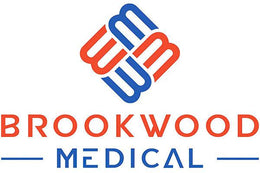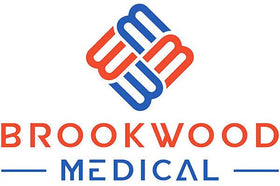Unmasking the Truth: Pros and Cons of DIY Face Masks

As the world continues to navigate through various health crises, face masks have become an essential item in our daily lives. While many people are well aware of the effectiveness of commercial options like the 3 ply disposable mask, the popularity of DIY face masks has surged. With individuals seeking ways to protect themselves while showing off their creativity, it’s important to explore both the benefits and drawbacks of making your own face covering. In this article, we delve into the pros and cons of DIY face masks so you can make an informed decision for yourself and your loved ones.
The Rise of DIY Face Masks
During the onset of the pandemic, many were left scrambling for personal protective equipment. With shortages rampant, creative individuals began crafting their own solutions. DIY face masks emerged as an accessible option for many who could not get their hands on high-quality commercial masks like the 3 ply disposable mask.
These homemade creations not only provided a necessary protective barrier but also gave people a sense of accomplishment and a canvas for their creativity. However, as with any homemade remedy, there are both advantages and disadvantages to consider.
Benefits of DIY Face Masks
Cost-Effective
One of the main advantages of crafting your own face mask is the cost-effectiveness. Pre-made masks can add up quickly, especially if you’re buying in bulk. In contrast, DIY masks can be made from common household materials such as cotton fabric, bandanas, or even old t-shirts. Not only does this save you money, but it also helps in reusing materials you already own, thereby minimizing waste.
Personalization
Another significant advantage of DIY masks is the ability to personalize them. You can select your favorite fabrics, colors, and patterns to create a mask that suits your style and personality. This customization can also be a fun family project, allowing parents and children to bond over crafting while teaching children the importance of health and hygiene.
Availability of Materials
In many areas, especially during the height of the pandemic, sourcing masks could be challenging. DIY face masks can be made from various available materials, making them more accessible for those who may not have the opportunity to purchase commercial options like the 3 ply disposable mask. With a little creativity, you can turn almost any fabric into a viable face-covering option.
Community Support
Many communities banded together to support each other during health crises by creating DIY masks. This grassroots effort fostered a sense of community and solidarity. People donated their time, resources, and sewing skills to help those in need, showcasing the power of coming together during difficult times.
Drawbacks of DIY Face Masks
Inconsistent Quality
One of the most significant downsides of DIY face masks is the inconsistency in quality. Unlike regulated products like the 3 ply disposable mask, homemade masks are not standardized. Their effectiveness depends highly on the materials used, the craftsmanship, and how well they fit the wearer. While some DIY masks can offer great protection, others may not perform as well, rendering them less effective against potential pathogens.
Limited Filtration
Even with proper material choices, DIY face masks may not provide the same level of filtration as commercially produced options. A 3 ply disposable mask is specifically designed to filter out particles and droplets effectively. In contrast, many DIY masks lack the multilayer construction that can greatly enhance filtration and thus may not provide adequate protection against airborne diseases.
Care and Maintenance
Maintaining hygiene is crucial when using face masks. DIY masks require thorough cleaning after each use to ensure they remain effective. This can entail washing them in hot water and making sure they are dried properly. For busy individuals or families, this added responsibility can be a drawback, especially when compared to the convenience of disposing of a 3 ply disposable mask after single-use.
Fit and Comfort
One aspect that can often be overlooked is the fit and overall comfort of the mask. A poorly fitting mask may negate the protective benefits altogether. While you can adjust homemade masks to some extent, the fit may still vary greatly from person to person. This inconsistency can lead to discomfort, prompting users to adjust their masks frequently or even forgo wearing them altogether.
Guidelines for Making Effective DIY Face Masks
If you decide to create your own face masks, there are certain guidelines to follow in order to maximize safety and comfort:
- Use Multiple Layers: Opt for materials that allow for multiple layers of fabric, which can enhance filtration and improve protection.
- Choose Breathable Fabrics: Use fabrics that are breathable but still effective in blocking droplets, such as cotton.
- Ensure Proper Fit: Make sure the mask fits snugly against the sides of your face without gaps. Consider adding adjustable ear straps or ties to achieve the best fit.
- Incorporate a Nose Wire: Adding a nose wire can help create a better seal, minimizing the air that escapes around the edges.
- Regular Cleaning: Wash your mask after each use in hot water to maintain hygiene and effectiveness.
When to Use a 3 Ply Disposable Mask
While DIY masks have their place, it’s essential to recognize scenarios where a 3 ply disposable mask is more suitable. These situations may include:
- Visiting crowded public spaces where social distancing is challenging.
- When spending time in high-risk environments, such as hospitals or care facilities.
- If you have underlying health conditions that may increase your risk of severe illness.
- During prolonged exposure situations where masks will be worn for extended periods.
Finding the Right Balance
In summary, DIY face masks provide a creativity-infused alternative to commercial options, offering affordability, personalization, and community spirit. However, their drawbacks—such as inconsistent quality, limited filtration, and care requirements—can impact their effectiveness. It’s essential to carefully weigh your options when deciding between a DIY mask and a 3 ply disposable mask.
Ultimately, the choice will depend on your specific circumstances, preferences, and local health guidelines. Striking the right balance between style, comfort, and safety is key to ensuring you and your loved ones stay protected.
Crafting Your Own Safety Style
Whether you choose to go the DIY route or opt for a reliable 3 ply disposable mask, the vital takeaway is to prioritize your health and the health of those around you. Empower yourself with knowledge, explore your crafty side, and remember, the best mask is one that protects you while allowing you to express your unique style. Happy crafting!






